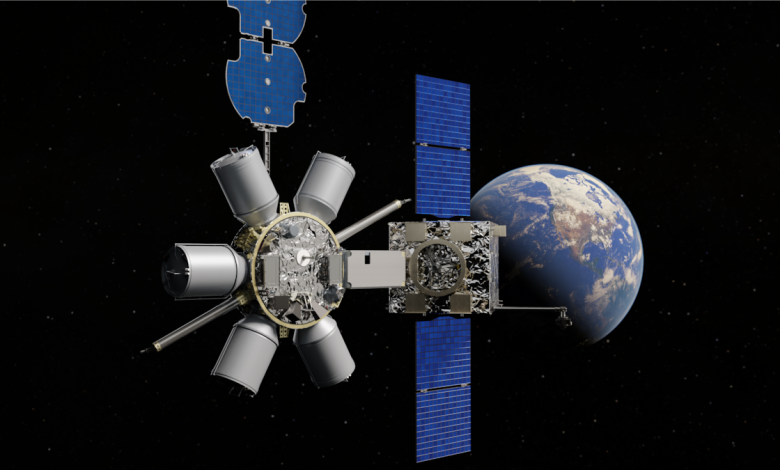Space Force picks Northrop for ‘Elixir’ satellite refueling demo

The Space Force has awarded Northrop Grumman a contract to develop a satellite refueling capability and demonstrate it through a new mission called Elixir.
The award follows a Space Systems Command contract Northrop received last year to develop a tanker satellite called GAS-T, or the Geosynchronous Auxiliary Support Tanker, and incorporates technology and lessons learned from that effort, which the company recently completed.
“The Elixir program enables us to complete development, build and launch of our refueling payload, which was at the heart of our GAS-T tanker,” Lauren Smith, Northrop’s program manager for in-space refueling, said Monday in an interview with Defense News. “So, this is building on Northrop Grumman’s existing work and continuing to advance technologies for refueling.”
Smith would not disclose the value of the Elixir contract, the technical details of the tanker payload or the planned timing of the launch. She did, however, note that the Rapid On-Orbit Space Technology Evaluation Ring, or ROOSTER-5, will carry the payload. That spacecraft had been previously slated to fly in a 2027 mission.
The receiving spacecraft will be fitted with the company’s Passive Refueling Model, an interface for satellite refueling that the Space Force named last year as one of its preferred standard interfaces.
According to Smith, Elixir aims to tackle three fundamental technical challenges: rendezvous and proximity operations — positioning satellites close together so that one can attach to another; docking, or making contact, with another satellite; and transferring fuel from one spacecraft to another.
“Performing refueling in space does require a carefully orchestrated dance, and we’re really looking forward to proving that out on orbit,” she said. “The scale at which this mission is being performed will position the technology well for a streamlined transition to future operational use, should the customer decide to do so.”
In-space refueling is seen as a key near-term enabler for mobility in space — a high-priority for the Space Force as China and Russia demonstrate the ability to perform complex maneuvers in space that could impede U.S. operations. Speaking at a defense conference in March, Gen. Michael Guetlein said commercial space firms had observed multiple instances of Chinese satellites performing what he called “satellite dogfighting” maneuvers in orbit.
“We have observed five different objects in space maneuvering in and out and around each other in synchronicity and in control,” Guetlein said March 18 during the McAleese Defense Programs Conference in Washington. “That’s what we call dogfighting in space. They are practicing tactics, techniques and procedures to do on-orbit space operations from one satellite to another.”
The Space Force has yet to lay out its vision for how it will incorporate satellite refueling and servicing capabilities into its architecture, but Elixir is one of several demonstrations it will stage over the next few years to help inform those plans.
That includes a 2026 mission involving a refueling spacecraft built by Astroscale U.S. and an Air Force Research Laboratory effort called Tetra-5, where two satellites will dock with refueling vehicles — one with Orbit Fab’s refueling station and a second with Astroscale’s. That mission is also slated for 2026.
Courtney Albon is C4ISRNET’s space and emerging technology reporter. She has covered the U.S. military since 2012, with a focus on the Air Force and Space Force. She has reported on some of the Defense Department’s most significant acquisition, budget and policy challenges.







